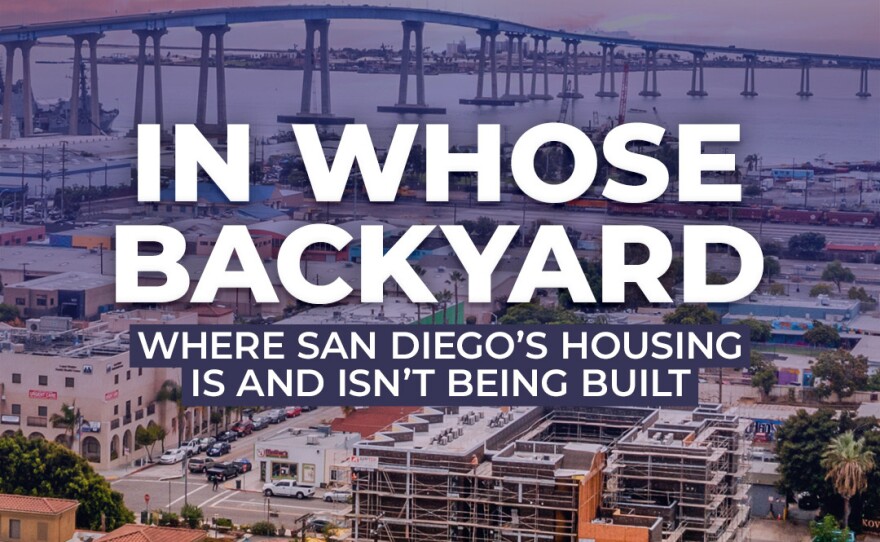Rents are rising everywhere in San Diego County, but data shows rents rise more slowly in ZIP codes with more permitted homes.
The average rent in San Diego County rose 52% between 2018 and the first four months of 2025, according to data from Zillow, rising from $2,071.67 to $3,161.94.
But rents grew the slowest in the ZIP codes that permitted the most homes. In the ZIP codes that permitted the fewest homes, rents skyrocketed.
ZIP codes with the most new permits
In downtown's 92101, more than 10,000 homes were permitted, about a tenth of the 96,859 homes permitted countywide between 2018 and 2024, according to the state’s Housing Element Annual Progress Report data.
In that ZIP code, rents increased by 31% from $2,251.90 to $2,955.68 — the lowest rate in the county.
In Mission Valley's 92108, more than 9,000 homes were permitted, and rents increased by 41% from $2,197.94 to $3,118.82 — the second-lowest rate in the county.
ZIP codes with the least new permits
Meanwhile, in the Coronado ZIP code, 92118, only 133 homes were permitted over six years, and rents grew by 75% from $3,355.30 to $5,895.38.
The second highest rental growth rate was 92058 in Oceanside, where 984 homes were permitted. Rents grew from $1,696.44 to $2,866.33 — a 68% increase.
And in Escondido’s 92027 ZIP code, where only 159 homes were permitted, rents grew by 67% from $1,634.15 to $2,731.96
Outliers
There were some outliers. For example, in Encinitas's 92024, 2,766 homes were permitted between 2018 and 2024, putting that ZIP code in the top 10 in the region, and average rents still grew by 66%.
But the vast majority of those permits were issued in 2024. It takes months, sometimes years, for permits to turn into new homes that can impact the rental market.
Meanwhile, in Carmel Valley's 92130, only 391 homes were permitted between 2018 and 2024, and rents increased by just 42%, the third lowest in the region.
But this neighborhood had the third highest average rent in the region in 2018 at $2,792.98. Rents still grew by almost $1,200 in that ZIP code, but that percent change was relatively lower than many other places.
The big picture
For 42 ZIP codes in San Diego County, the rental growth rate between 2018 and 2025 was negatively correlated with the number of permits issued.
That means, in general, the places that permitted more homes saw a slower rental growth rate.
And the ZIP codes with below-average rental growth rates permitted nearly twice as many homes as the ZIP codes with above-average rental growth rates.
UCLA research shows that new market-rate housing makes nearby existing homes more affordable because building lots of new homes makes it harder for other landlords to raise rents.
Supply and demand still apply, even to housing. In San Diego, where new buildings go up, rents do not. At least, not nearly as much as they do in the places that don’t build anything.





